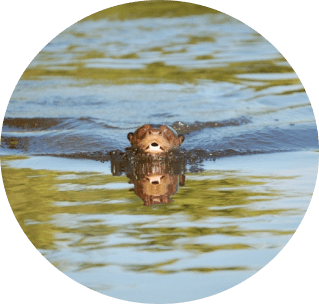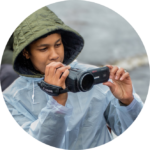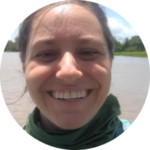The Giant Otter
The “Giant Otter Project” was founded with the objective of strengthening the conservation of the species and its ecosystem, seeking to improve human coexistence with the giant otter and the engagement of stakeholders in conservation actions and decisions
The species
The giant otter belongs to the otter subfamily (Lutrinae) and is the largest of the 13 extant otter species.
The scientific name of the otter is Pteronura brasiliensis (Ptero = wing, nura = tail), due to the flattened shape of its tail, which resembles a wing or an oar. The first giant otter was discovered in Brazil, which is why its scientific name is also a tribute to the country, which still has the largest distribution area of the species.
Otters only occur in South America and feed mainly on fish, but they can also consume crabs, frogs, snakes, lizards, caimans and other vertebrates.
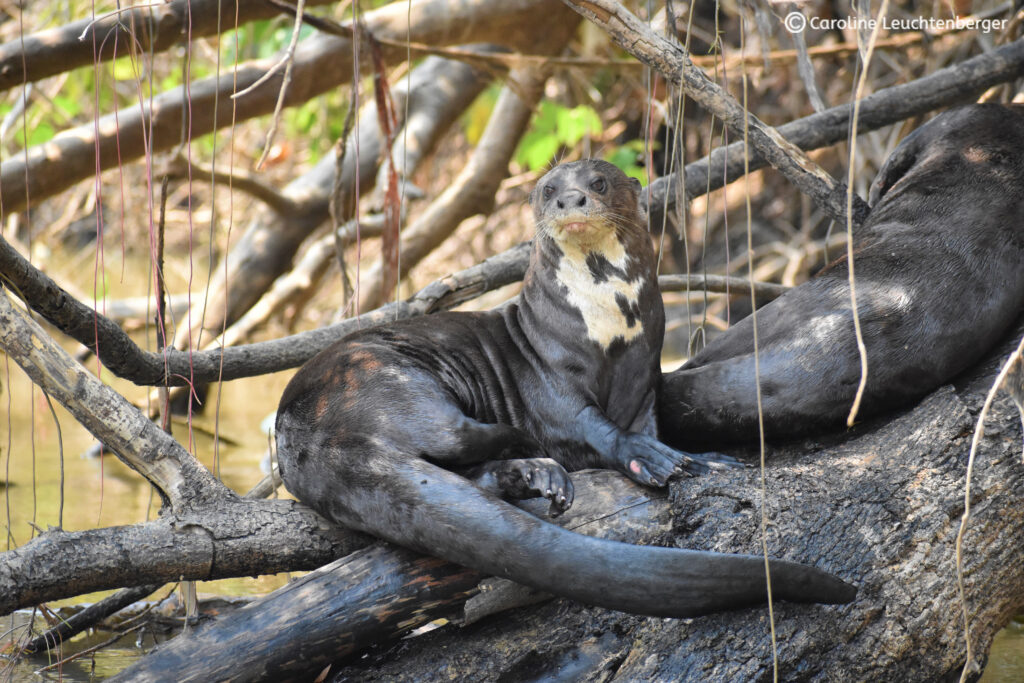
Giant otters live in groups of 2 to 20 individuals, consisting of a breeding pair and several young individuals of different ages, who help in raising the small cubs.
Their dens are built along the banks of rivers and bays and are used for protection, resting, reproduction and care of the young.
In addition, the group uses latrines, which are a kind of collective bathroom, which serves to mark the territory with its characteristic smell.
The territories of the groups measure a linear average of 10 km along water bodies and the banks are scent-marked daily by the members of the group. During the rainy season, when the level of the river rises, territories can increase up to 3 times or more.
Scent-marking is one of the ways that giant otters communicate and that helps groups to organize the limits of their territories along the water bodies.
Encounters between rival groups often end in violent and noisy fights.

Otters use a vocal repertoire with up to 15 different sounds to communicate.
To learn more about the species, read our publications.
Threats
Giant otters are considered globally endangered (IUCN Red List) and need your help.

Until the beginning of the 1990s, hunting for the commercialization of pelts drastically reduced the population of giant otters along all the species distribution. In Brazil, viable populations of the species occur in some regions of the Amazon Basin and in the Pantanal. In the Cerrado, a giant otter population seems to be limited to the Tocantins River basin.
The Pantanal population is at the southern limit of the species’ distribution and, in addition, has the lowest genetic diversity.
Habitat loss and degradation, mainly due to human activities is today the greatest threat to the species. Throughout their entire range, giant otter populations are being decimated by contamination of rivers and destruction of riparian forest caused by gold mining, agriculture and other human activities. Hydroelectric dams can isolate populations and degrade the environment, changing the availability of resources. Human conflicts with the species are also common and are often motivated by the simplistic idea that the species is dangerous or a competitor for fish.
Poorly-managed tourism is also a threat. Traffic and the approach of vessels can scare away the group or even affect the survival of cubs.
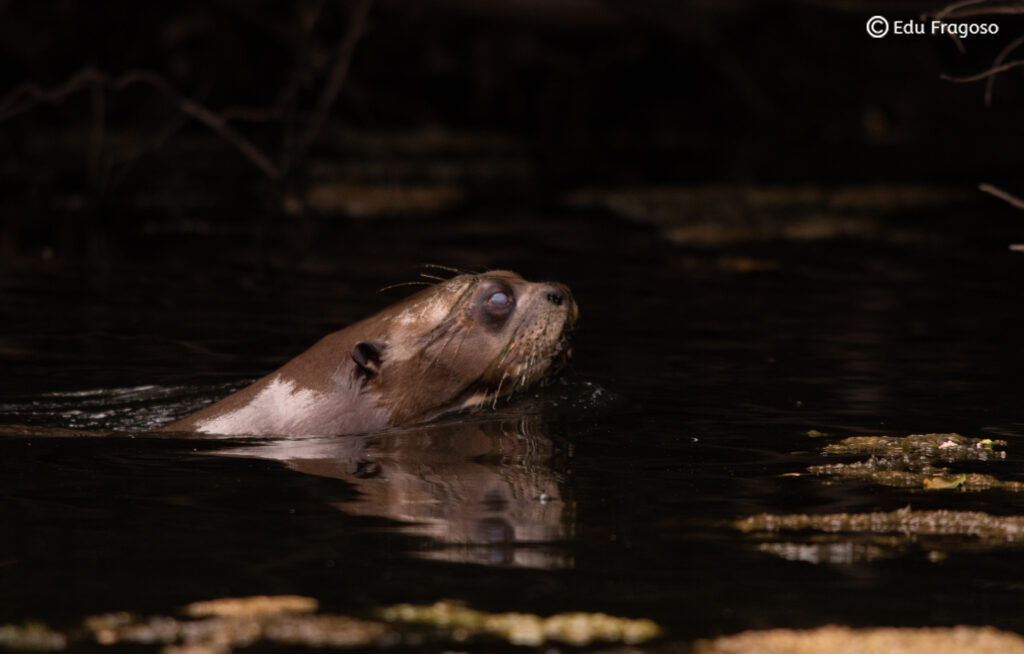
Behaviors and Sounds
Have the experience of hearing some of the sounds of giant otters.
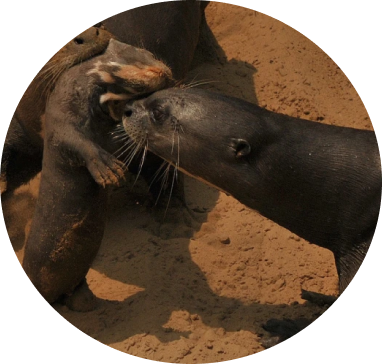
Cub care / Sounds: hum’s, coo’s, pur’s and high-pitched coo’s
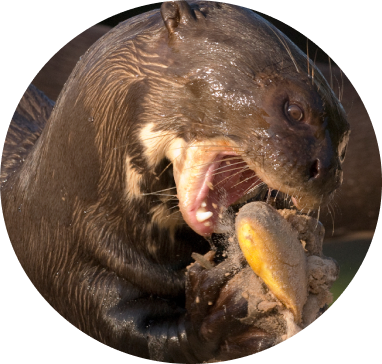
Food defense / Sound: growl

Agonism, fight / Sound: snorts, high-pitched screams and calls
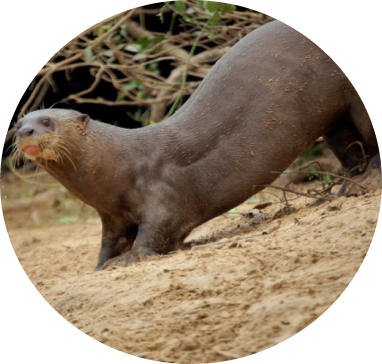
Scent-Marking: purring and humming
